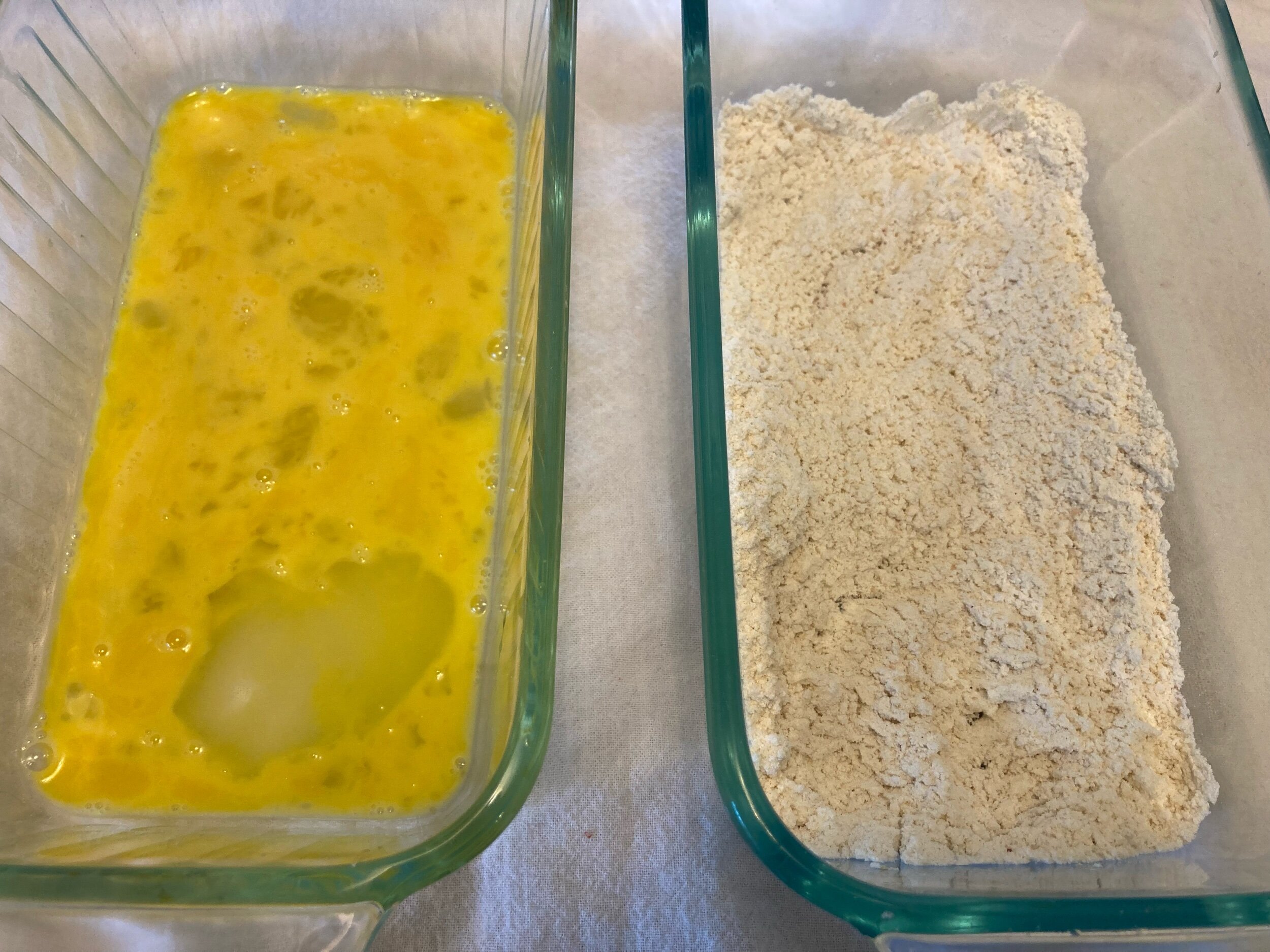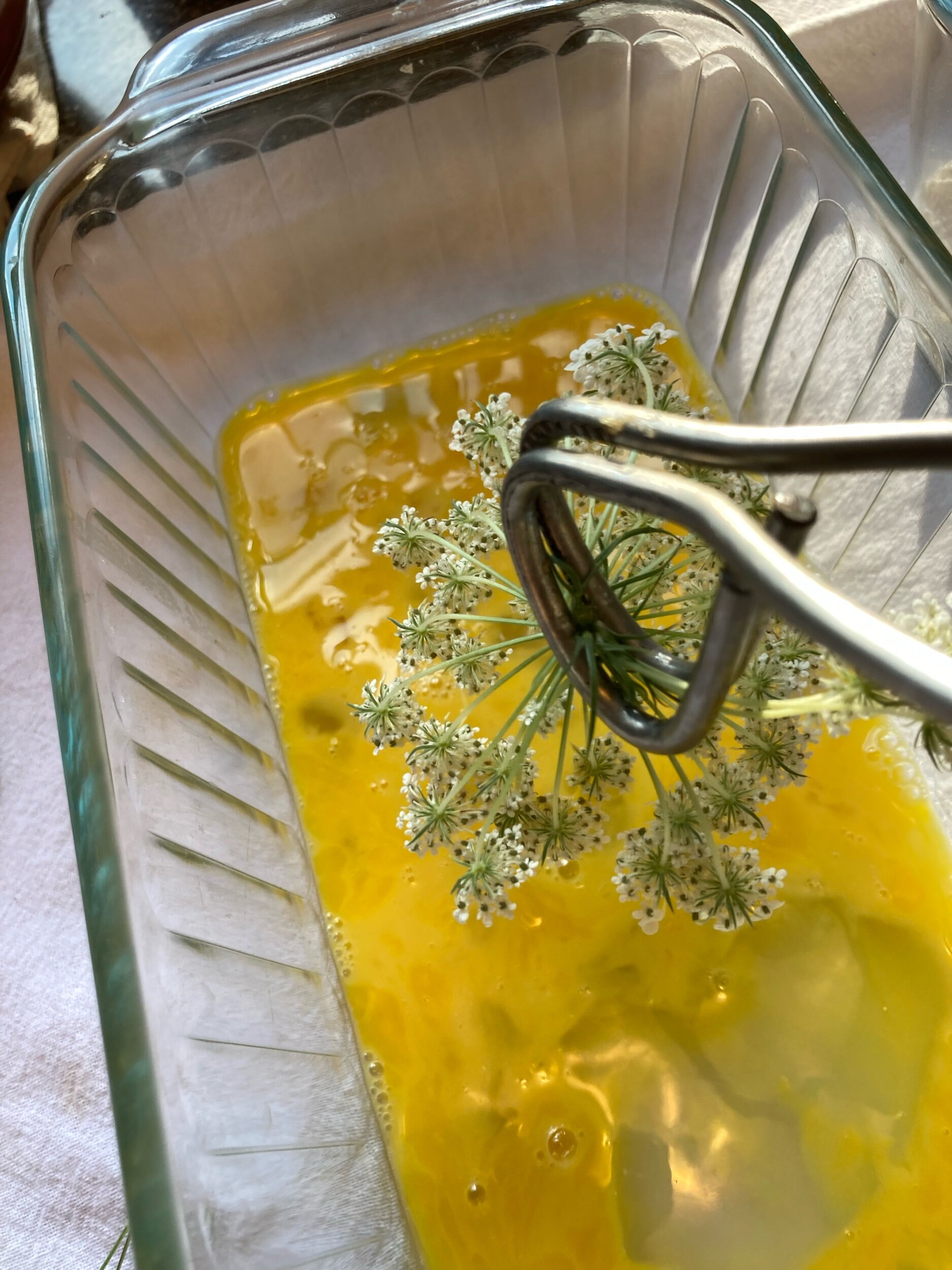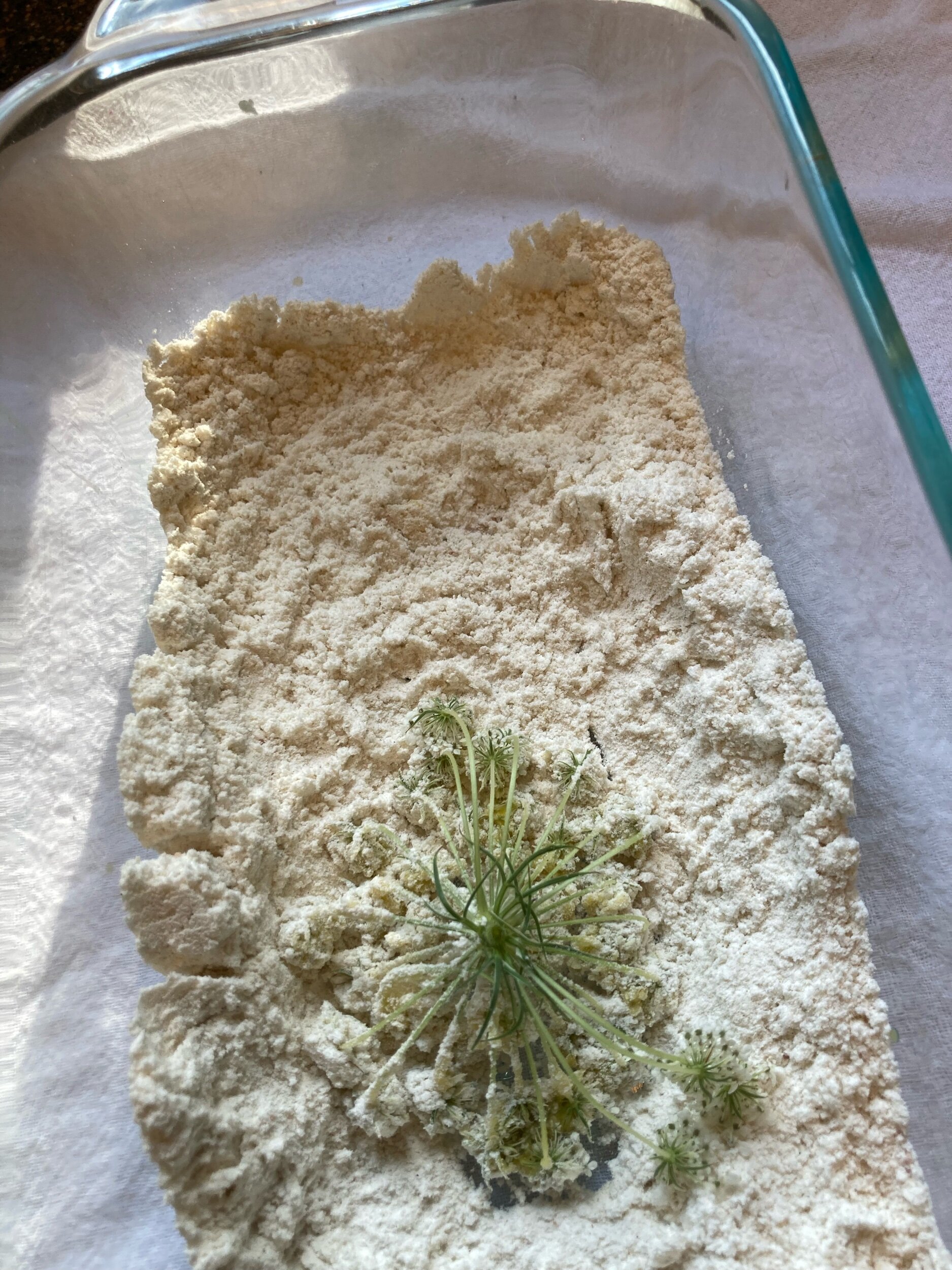Gluten-Free Queen Anne’s Lace Fritters
I have a treat for you today! Here is a lovely recipe for gluten-free Queen Anne’s Lace fritters with a paleo option. If you have ever sat and wondered how do you eat Queen Anne’s Lace (also called Wild Carrot) then this recipe is for you. It is a delightful treat, and my family was truly surprised at how delicious this is. Nature’s bounty is all around us and sometimes it just comes down to figuring out how to enjoy it.
Rewilding our taste buds sometimes isn’t easy, and I understand about being “scared” to try wild food. Honestly, Adventure Girl made wild fermented soda and we were both a little scared of it. I also laughed out loud watching my sister try my Cat’s Ear Jelly. Truth is, I don’t blame anyone for being scared of wild food. Wild food is tastes that we are not familiar with and… their weeds! Frying your flower heads takes some of the scariness away because it’s fried. Who doesn’t like fried food?
I caution against using this recipe if you are pregnant or want to become pregnant. Queen Anne’s Lace has historically been used as birth control and it is known to prevent egg implantation as well as blocking the hormone progesterone and limiting fetal growth.
Queen’s Anne Lace (wild carrot)
Queen’s Anne Lace is a wildflower native to Europe and SW Asia. It is also known as wild carrot and is thought to be the ancestor to all cultivated carrots. It is considered invasive in many parts of the United States. It is not on Oregon’s noxious weed list but is considered a class C noxious weed in Washington and does cause some crop and livestock disruption. It is EVERYWHERE around my area and it lines many roads and fields.
The single purple flower of Queen Anne’s Lace, often referred to as Queen Anne herself.
You should be careful not to confuse Queen Anne’s Lace with a very poisonous look-alike Poison Hemlock. The consequences of confusing the two can be deadly. Queen’s Anne Lace is edible and Poison Hemlock is poisonous as the name suggests. If you choose to eat Queen Anne’s Lace you need to make sure you absolutely know what it is. This is true for all foraging though. You really shouldn’t just go around eating random things but that goes without saying. One Queen’s Anne Lace giveaway is its smell. It smells like carrot, especially the root. Queen’s Anne Lace also often has a single purple flower in the middle.
You should not take Queen Anne’s Lace from roadways or any area that may be sprayed. It lines all my local roads so I know it may be tempting but please avoid temptation. Roadways are prone to spraying and the fumes from the exhaust taint the flowers. Find a nice field in a park or ask a landowner who has a field of it. I occasionally have people asking me to forage various things on my property and I usually say yes.
When Queen Anne’s Lace goes to seed it resembles a bird’s nest. The sticky seeds are just waiting for an unsuspecting passerby to come along to help spread them.
Queen’s Anne Lace Fritters: Gluten-Free and Paleo versions.
Here are two different recipes for making Queen’s Anne Lace fritters. I have a paleo version and a gluten free version. Everyone in this house slightly preferred the gluten-free version although the paleo version was good too.

Gluten-Free Queen Anne's Lace Fritters
Ingredients
- Queen Anne's Flower Heads (Optional: leave 6-8" of stem attached to hold while frying)
- Oil to fry
- 1/2 cup Gluten Free Flour Blend
- -alternative Paleo Version: 1/2 cup Coconut Flour
- 3/4 teaspoon salt
- 1/2 teaspoon paprika
- 2 eggs
Instructions
- Pick your Queen Anne's Lace flowers. Leave 6-8" of stem to hold onto while frying if desired. Choose smaller and more compact flower heads if possible for easier eating. Wash and pat dry.
- Add 1" of oil to a frying pan and heat oil to between 350-400 degrees.
- Combine all dry ingredients in a small bowl.
- Lightly whisk eggs in another small bowl.
- Using tongs or the stem to hold onto the bottom of the flower or holding onto 6-8" of stem, dip your flower head into the egg mixture flower top down.
- Dip your flower, top down, into the flour mixture.
- Dip your flower into the hot oil. Fry the gluten-free version for up to one minute and the paleo version for 30 seconds. Fry until the flower becomes crispy and golden brown.
- Remove and place on a plate covered with a paper towel to soak up extra grease.
- Cool slightly and eat while still warm. Stick the whole flower in your mouth and remove the flowers with your teeth, leaving the green bracts. (They are edible too just tougher)
When you fry you need to be sure to use oil that is safe at high temperatures. It needs to have a high smoke point and be stable at high temperatures so it doesn’t react to oxygen. Avocado oil and peanut oils are both what I use to fry in. Avocado oil has a smoke point of 520 degrees Fahreinheit and peanut oil has a smoke point of 450 degrees although it is slightly more oxidative than Avocado oil.
The first step is to pick your Queen Anne’s Lace. Adventure Girl chose smaller flower heads with the little clusters that are closer together. This just aids in getting everything battered and eaten. She picked just the flowers as well as the flowers with 6-8” of stem attached so you can hold on to the stem when frying.
I didn’t wash my flowers but I gently shook them against the counter to shake off any bugs.
While you are preparing your flour mixture and your eggs, heat up oil in a deep frying pan. You will need 1/2”-1” of oil. Oil should be between 350-400 degrees Fahrenheit for frying.
You will need two containers or bowls to use to dip your flowers in. The first one for your egg mixture and the second one for your flour mixture.
In the first bowl, lightly whisk two eggs.
In the second bowl combine half a cup of gluten-free flour blend with 3/4 teaspoon of salt and 1/2 teaspoon of paprika. For the paleo version use 1/2 cup of coconut flour instead of the 1/2 cup of gluten-free flour blend.
There is two methods of holding onto your flower heads for frying. The first method is to use tongs and the second method is to keep 6-8” of stem and hold onto that while frying.
Hold onto the stem of your flower. You will first dip your flowerhead into the egg mixture. Be sure to completely covering the flower.
Next, dip your flower into the flour mixture until all your flowers are completely covered.
Finally, dip your flowerhead into the hot oil. You will fry your flower between 30 second to one minute or until it is golden brown. Our gluten-free flour blend mixture took one minute to brown up while the paleo version only took 30 seconds.
Place your freshly fried flower on a plate with a power towel liner. This will soak up the extra grease.
Cool slightly but eat while it is still warm. Stick the whole flowerhead in your mouth and tear the flowers off with your teeth leaving the green bracts. They are edible, just tougher.
If you don’t want to use tongs with your flowers, you can leave 6-8” of stem on your flower and hold onto that while frying.
I would like to give a shout out to Practical Primitive and The Crunchy Delinquent for sharing how they make Queen Anne’s Lace Fritters.
Enjoy!










